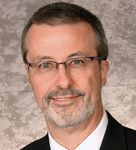Grasp the dos and don'ts of electronic medical records
Adding electronic medical records to a practice is a huge undertaking.
The 2014 deadline for universal use of electronic medical records (EMR) is fast approaching-especially considering the technology can take years for a practice to fully implement.

Adding EMR to a practice is a huge undertaking. To help doctors get through what can be an expensive, frustrating, and tedious process, Dr. Wright offers these tips.
An EMR's function depends on the power or the practice's server, or computer hardware.
"It is better to have more power in the server than less power, but having more power costs more. Doctors who choose the minimum requirements of hardware to run the software often find the software does not function as quickly or as well as they want," he said.
Do consider entering old data
EMRs are designed to save time, but getting the technology up to speed takes time. Adding older records to the database is a big issue, according to Dr. Wright.
There are usually three options, when it comes to adding existing patient information to the software. Staff or temporary help can add all patient records to the system at one time, or choose to scan old patient records and have only pictures (e.g., PDF) of the records on the computer. By only scanning records, doctors lose the ability to mine the data to glean important data for marketing and other purposes, he said.
Yet a third option is, as the patient returns to the office, to add specific information into the EMR from old patient records and scan the rest-but only for the returning patients.
Dr. Wright said that eye care practices most commonly take the third option, which requires less manpower. In this case, the data conversion usually occurs in 2 to 3 years. Doctors that decide to input all patient information might hire someone to do that in weeks or longer, he said.
Newsletter
Want more insights like this? Subscribe to Optometry Times and get clinical pearls and practice tips delivered straight to your inbox.